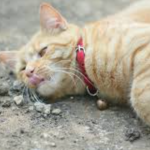Maintaining your pet’s grooming needs is an essential part of their overall health and comfort. However, dealing with matted fur can become a common challenge for pet owners, especially those with long-haired companions. Understanding why mats occur and learning safe removal techniques is crucial for a pet’s well-being. Here’s a comprehensive guide on handling matted fur in both dogs and cats, along with when it’s best to seek professional assistance.
Managing Matted Fur in Pets:
Causes of Matting:
Matted fur often arises due to inadequate grooming practices. When pets, particularly those with long or thick coats, aren’t brushed regularly, individual hairs intertwine, forming tangles that evolve into mats. Cats may also develop mats when they cease self-grooming due to discomfort or underlying illness, while dogs might experience this due to a lack of proper grooming by their owners. Additionally, environmental factors like static electricity, dry climates, and certain seasons can exacerbate mat formation.
Effects of Matted Fur:
While minor mats might seem harmless, severe matting can lead to discomfort, skin infections, and potential injuries. The mats can tighten, and constrict limbs, causing skin irritation, or even hiding underlying problems such as flea infestations or skin conditions. Addressing mats is crucial to prevent these complications.
Safe Removal Techniques:
Removing mats requires cautious handling. Clippers are preferable to scissors for effective and safer removal, minimizing the risk of accidental cuts. Working on dry hair is advisable, as wetting mats can worsen the tangles. It’s crucial to be attentive and avoid overheating the clippers or causing skin irritations during the process.
Preventing Matting:
Regular grooming is key to preventing mats. Brushing your pet two to three times weekly with suitable tools—such as a slicker brush, metal comb, or dog rake for shedding undercoats—ensures that you’re reaching through the layers of the coat, preventing hidden mats. Additionally, using de-matting sprays can aid in loosening minor tangles, but it’s vital to follow product instructions carefully.
Seeking Professional Help:
When dealing with extensive mats or if unsure about the correct tools or products, seeking professional grooming assistance is wise. Experienced groomers can efficiently manage the process, minimizing stress for your pet and ensuring safe and effective mat removal.
Conclusion:
Understanding the causes of matting, employing safe removal techniques, maintaining a regular grooming routine, and seeking professional help when necessary are essential steps in managing and preventing matted fur in pets. By prioritizing their grooming needs, pet owners can ensure their furry companions remain healthy, comfortable, and free from troublesome tangles.




